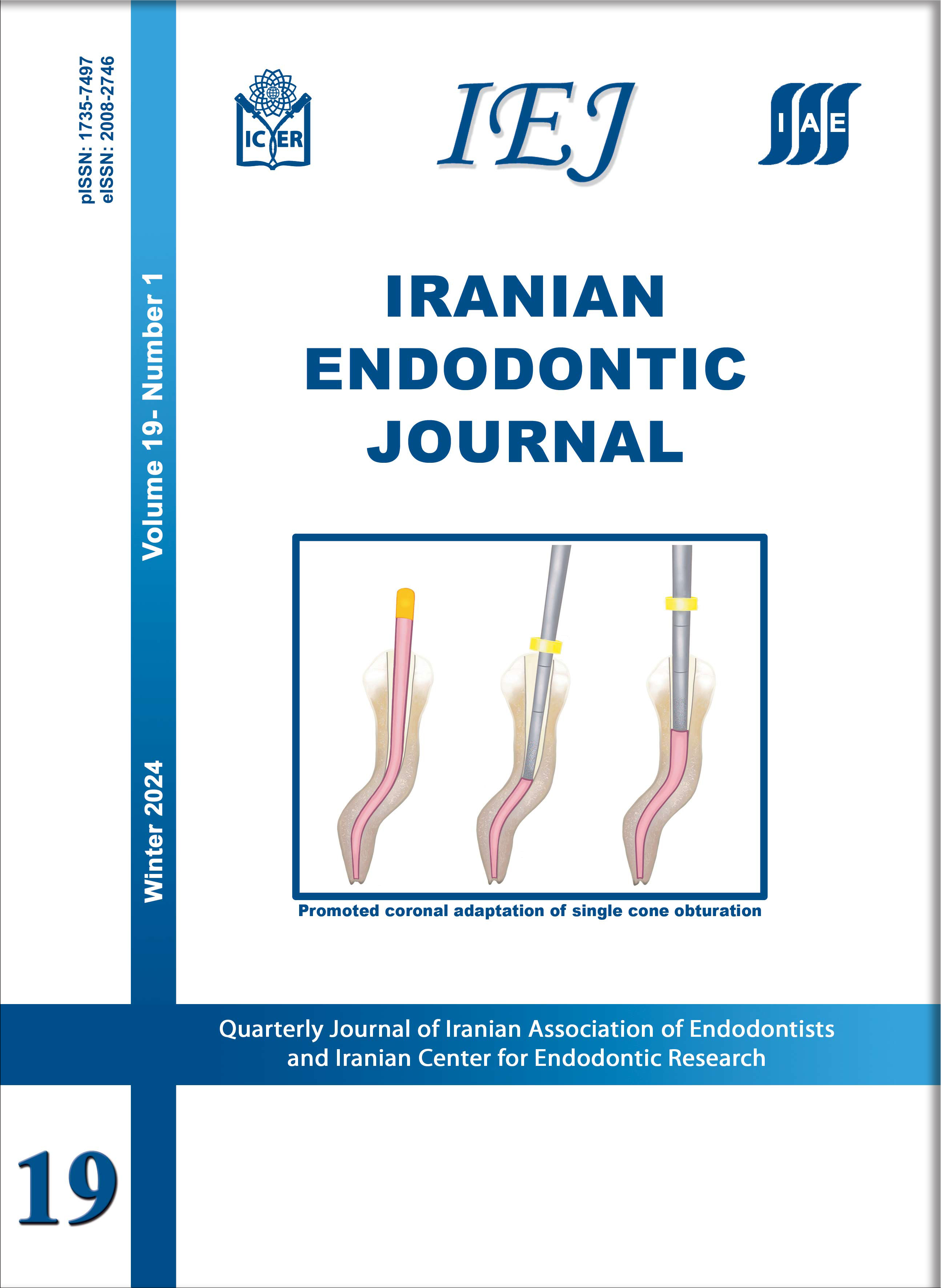Quantifying the Extruded Bacteria Following Use of Two Rotary Instrumentation Systems
Iranian Endodontic Journal,
Vol. 2 No. 3 (2007),
2 October 2007,
Page 77-80
https://doi.org/10.22037/iej.v2i3.308
INTRODUCTION: All instrumentation techniques have been reported to be associated with extrusion of infected debris. The aim of this study was to evaluate the number of bacteria extruded apically from extracted teeth ex vivo after canal instrumentation using the two engine-driven techniques utilizing nickel-titanium instruments (Flex Master and Mtwo). MATERIALS AND METHODS: Seventy extracted maxillary central incisor teeth were used. Access cavities were prepared and root canals were then contaminated with a suspension of Enterococcus faecalis and dried. The contaminated roots were divided into two experimental groups of 30 teeth each and one control group of 10 teeth. Group 1, Flex Master; Group2, Mtwo; Group 3, control group: no instrumentation was attempted. Bacteria extruded from the apical foramen during instrumentation were collected into vials. The microbiological samples from the vials were incubated in culture media for 24 h. Colonies of bacteria were counted and the results were given as number of colony-forming units. The obtained data were analyzed using the Kruskal-Wallis one-way analysis of variance and Mann-Whitney U-tests, with α = 0.05 as the level for statistical significance. RESULTS: Findings showed that there was no significant difference as to the number of extruded bacteria between two engine-driven systems (P>0.05). CONCLUSION: Both engine-driven Nickel-Titanium systems extruded bacteria through the apical foramen.




